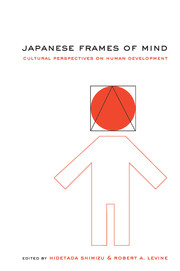Book contents
- Frontmatter
- Contents
- Notes on the Contributors
- Preface: Japan as Front Line in the Cultural Psychology Wars
- Introduction: Japanese Cultural Psychology and Empathic Understanding: Implications for Academic and Cultural Psychology
- PART ONE MORAL SCRIPTS AND REASONING
- PART TWO MOTHER AND CHILD AT HOME
- PART THREE GROUP LIFE: THE YOUNG CHILD IN PRESCHOOL AND SCHOOL
- PART FOUR ADOLESCENT EXPERIENCE
- PART FIVE REFLECTIONS
- 9 Children and Families: Reflections on the “Crisis” in Japanese Childrearing Today
- Index
9 - Children and Families: Reflections on the “Crisis” in Japanese Childrearing Today
Published online by Cambridge University Press: 23 July 2009
- Frontmatter
- Contents
- Notes on the Contributors
- Preface: Japan as Front Line in the Cultural Psychology Wars
- Introduction: Japanese Cultural Psychology and Empathic Understanding: Implications for Academic and Cultural Psychology
- PART ONE MORAL SCRIPTS AND REASONING
- PART TWO MOTHER AND CHILD AT HOME
- PART THREE GROUP LIFE: THE YOUNG CHILD IN PRESCHOOL AND SCHOOL
- PART FOUR ADOLESCENT EXPERIENCE
- PART FIVE REFLECTIONS
- 9 Children and Families: Reflections on the “Crisis” in Japanese Childrearing Today
- Index
Summary
Ayako, a happy five-year-old, plays with her dolls in a sunny corner of the kitchen-dining area of her family's small apartment. Her mother, in a clean frilled apron, is busy packing a lunch for her in a “Hello Kitty” lunch box, including a set of bright pink chopsticks in a small chopstick case, a freshly ironed napkin, and a small damp oshibori, or washcloth, in a special plastic bag. The lunch contains “something from the mountains, something from the sea”, a nutritional balance dictated by tradition, school protocol, and the “secret mothers' school” of information passed from mother to mother, consonant with the general high standards for mothering in Japan today (Allison, 1991).
Those high standards for mothering are grounded in both new and old cultural perceptions of the child and changing concepts of family in Japan. It was not always “mother” who was the point person for children's development, the person marked as responsible for the environment and outcomes of childrearing, and in many families mothers cannot fulfill this totalistic responsibility. And, yet, as Yoshie Nishioka Rice describes her (see Rice, this volume), the kosodatemama (childrearing mother) is such a strong role designation that it transcends realities of class, opportunity, and personal choice. However entrenched it may seem, the model of the “childrearing mother” cannot always be realized – especially in families where motherhood is not the woman's only defining role.
- Type
- Chapter
- Information
- Japanese Frames of MindCultural Perspectives on Human Development, pp. 257 - 266Publisher: Cambridge University PressPrint publication year: 2002

